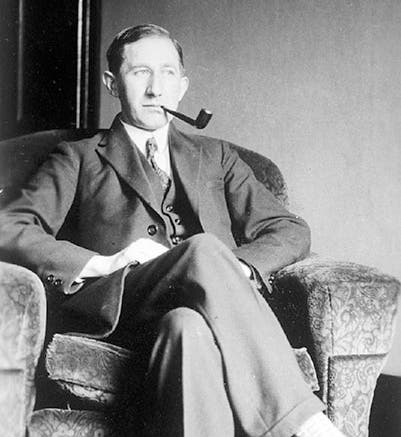Scientist of the Day - Walter Baade
Walter Baade, a German astronomer, was born Mar. 24, 1893. Baade came to the United States on a Rockefeller fellowship in the late 1920s, and when things turned rotten in Germany with the rise of Hitler and Naziism, he stayed. Baade spent his entire career at the Mount Wilson and Palomar Observatories in Pasadena, California. With his colleague Fritz Zwicky, Baade in 1934 identified a new class of celestial objects known as "supernovae." Astronomers had long known about novae, which are exploding stars that for a time get much brighter than ordinary stars, and there are hundreds of novae that are identified annually. Yet there seemed to be a few novae, such as one that exploded in Andromeda in 1885 (known as S Andromedae, or SN 1885A) that get millions and even billions of times brighter than the typical star, so that they can for a short time outshine entire galaxies. These are the supernovae, which would include Tycho's star of 1576 and Kepler's nova of 1604. Supernovae are stars that explode catastrophically, consuming their remaining energy supply in a matter of seconds.
For want of anything more exciting in the way of graphics (there are no photographs or spectrographs of S Andromedae), we show you the first page of Baade and Zwicky’s 1934 paper, twice (second and third images), and also the front cover of the journal issue in which it appeared, the Proceedings of the National Academy of Sciences (fourth image), simply because this was an unusual place to publish a paper that really belonged in Astrophysical Journal. There is probably a story behind this which we do not know.
Baade also proposed that an exploding supernova would produce a neutron star at its core, a supposition which has since been confirmed. And Baade was the first to discover what he called Population II stars, which differ from stars like our Sun and Sirius (Population I stars) in that they contain few metals. We now know that Population II stars are very old, having formed when there was little in the universe except hydrogen and helium. All the metals in our Sun were first formed in older stars, exploded out into the interstellar medium (by supernovae!), and thus made available for future stars, so that the presence of metals in a star indicates that it was formed recently – say, in the past five billion years. Incidentally, to an astronomer, a metal is any element besides hydrogen and helium, which is enough to make a chemist weep.
Finally, Baade figures in a story told by Richard Feynman, one of the fathers of quantum electrodynamics. Feynman, who was at Caltech in the 1950s, and whose marriage was coming apart, was contemplating a return to Cornell. Then, he related, a colleague rushed up to tell him that Walter Baade had just discovered that there are two kinds of Cepheid variables, which means that the universe is a lot bigger and a lot older than Hubble had thought. Immediately thereafter, another colleague ran into Feynman and announced that he had just concluded an elegant experiment that demonstrated that Watson and Crick were right about how DNA replicates. Whereupon Feynman realized that there was no other place in the world like Caltech, and he would stay right there.
Baade died in 1960, at the age of 67. Instead of the portrait used in nearly every biography, such as in Wikipedia, we show instead a younger Walter Baade in our first image. Baade’s Wikipedia article, by the way, is woefully inadequate for an astrophysical giant like Baade, and it should be considerably expanded and rewritten, the sooner the better.
Dr. William B. Ashworth, Jr., Consultant for the History of Science, Linda Hall Library and Associate Professor emeritus, Department of History, University of Missouri-Kansas City. Comments or corrections are welcome; please direct to ashworthw@umkc.edu.









